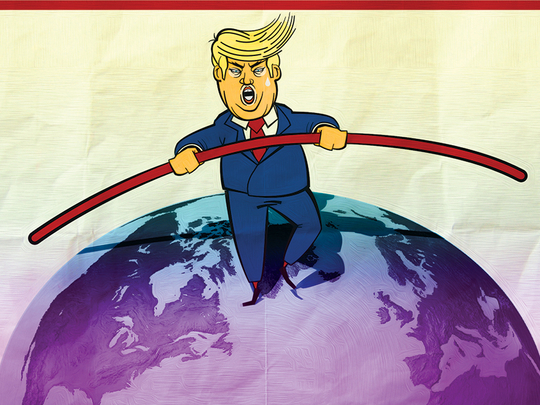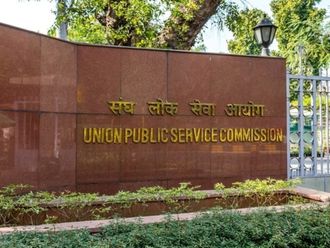
During his campaign, Republican candidate and now president-elect of the United States, Donald Trump, had questioned the alliances and institutions that undergird the liberal world order, but he spelled out few specific policies. Perhaps the most important question raised by his victory is whether the long phase of globalisation that began at the end of the Second World War is essentially over.
Not necessarily. Even if trade agreements like the Trans-Pacific Partnership (TPP) and the Transatlantic Trade and Investment Partnership (TTIP) fail and economic globalisation slows down, technology is promoting ecological, political and social globalisation in the form of climate change, transnational terrorism and migration — whether Trump likes it or not. World order is more than just economics and the US remains central to it.
Americans frequently misunderstand their place in the world. They oscillate between triumphalism and declinism. After the Soviets launched Sputnik in 1957, Americans believed they were in decline. In the 1980s, they thought the Japanese were ten feet tall. In the aftermath of the Great Recession of 2008, many Americans mistakenly believed that China had become more powerful than the US.
Despite Trump’s campaign rhetoric, the US is not in decline. Because of immigration, it is the only major developed country that will not suffer a demographic decline by mid-century; its dependence on energy imports is diminishing rather than rising; it is at the forefront of the major technologies (bio, nano, information) that will shape this century; and its universities dominate the world league tables.
Many important issues will crowd Trump’s foreign policy agenda, but a few key issues will likely dominate — namely great-power relations with China and Russia and the turmoil in the Middle East. A strong American military remains necessary, but not sufficient to address all three. Maintaining the military balance in Europe and East Asia is an important source of American influence, but Trump is correct that trying to control the internal politics of nationalistic populations in the Middle East is a recipe for failure.
The Middle East is undergoing a complex set of revolutions stemming from artificial post-colonial boundaries; sectarian strife and the delayed modernisation described in the United Nations’ Arab Human Development Reports. The resulting turmoil may last for decades. Europe remained unstable for 25 years after the French Revolution and military interventions by outside powers made things worse.
But, even with reduced energy imports from the Middle East, the US cannot turn its back on the region, given its interests in Israel, non-proliferation and human rights, among others. The civil war in Syria is not only a humanitarian disaster; it is also destabilising the region and Europe as well. The US cannot ignore such events, but its policy should be one of containment, influencing outcomes by nudging and reinforcing American allies, rather than trying to assert direct military control, which would be both costly and counterproductive.
In contrast, the regional balance of power in Asia makes the US welcome there. The rise of China has fuelled concern in India, Japan, Vietnam and other countries. Managing China’s global rise is one of this century’s great foreign-policy challenges and America’s bipartisan dual-track strategy of “integrate but insure” — under which the US invited China to join the liberal world order, while reaffirming its security treaty with Japan — remains the right approach.
Unlike a century ago, when a rising Germany (which had surpassed Britain by 1900) stoked fears that helped precipitate the disaster of 1914, China is not about to pass the US in overall power. Even if China’s economy surpasses America’s in total size by 2030 or 2040, its per capita income (a better measure of an economy’s sophistication) will lag. Moreover, China will not equal US military “hard power” or its “soft power” of attraction. As Lee Kuan Yew, the first prime minister of Singapore, once said, so long as the US remains open and attracts the talents of the world, China will “give you a run for your money”, but will not replace the US.
For these reasons, the US does not need a policy of containment of China. The only country that can contain China is China. As it presses its territorial conflicts with neighbours, China contains itself. The US needs to launch economic initiatives in Southeast Asia, reaffirm its alliances with Japan and Korea and continue to improve relations with India.
Finally, there is Russia, a country with a nuclear arsenal sufficient to destroy the US — and thus still a potential threat to America and others. Russia, almost entirely dependent on revenues from its energy resources, is a “one-crop economy” with insurmountable demographic and health problems. President Vladimir Putin’s interventions in neighbouring countries and the Middle East and his cyberattacks on the US and others, though intended to make Russia look great again, have merely worsened the country’s long-term prospects. In the short run, however, declining countries often take more risks and are thus more dangerous — witness the Austro-Hungarian Empire in 1914.
This has created a policy dilemma. On the one hand, it is important to resist Putin’s game-changing challenge to the post-1945 liberal order. At the same time, Trump is correct to avoid the complete isolation of a country with which America has overlapping interests when it comes to nuclear security, non-proliferation, anti-terrorism, the Arctic and regional issues like Iran and Afghanistan. Financial and energy sanctions are necessary for deterrence; but America also has genuine interests that are best advanced by dealing with Russia. No one will gain from a new Cold War.
The US is not in decline. The immediate foreign-policy task for Trump will be to adjust his rhetoric and reassure allies and others of America’s continuing role in the liberal world order.
— Project Syndicate, 2016
Joseph S. Nye, Jr. is a professor at Harvard and author of Is the American Century Over?








